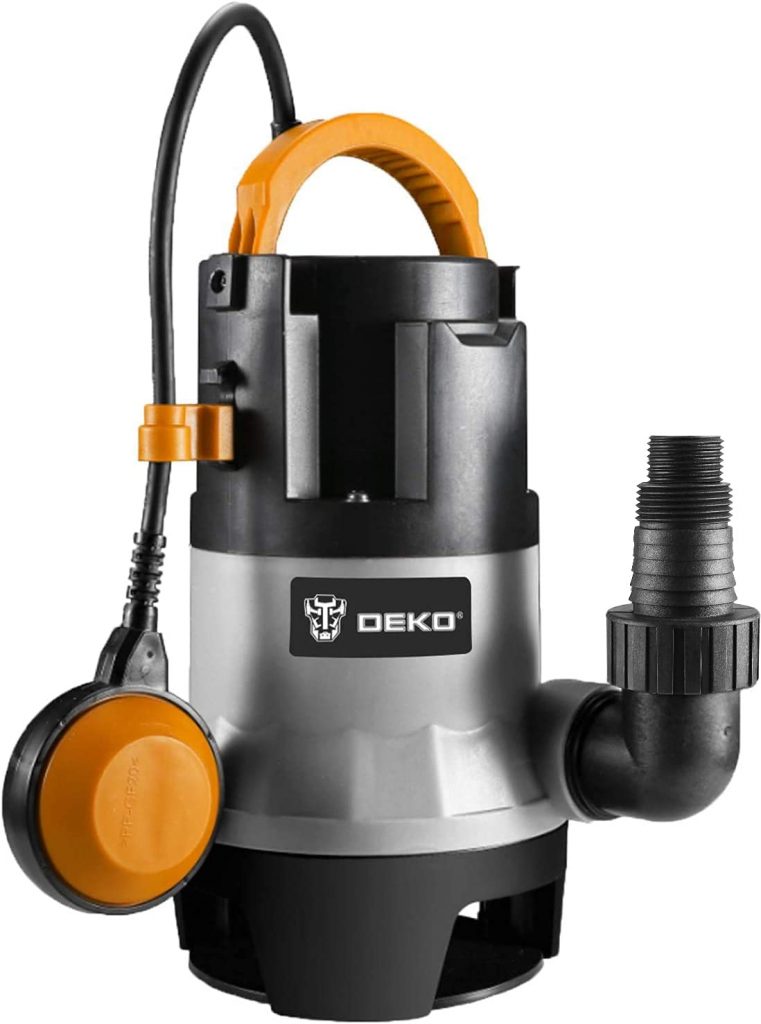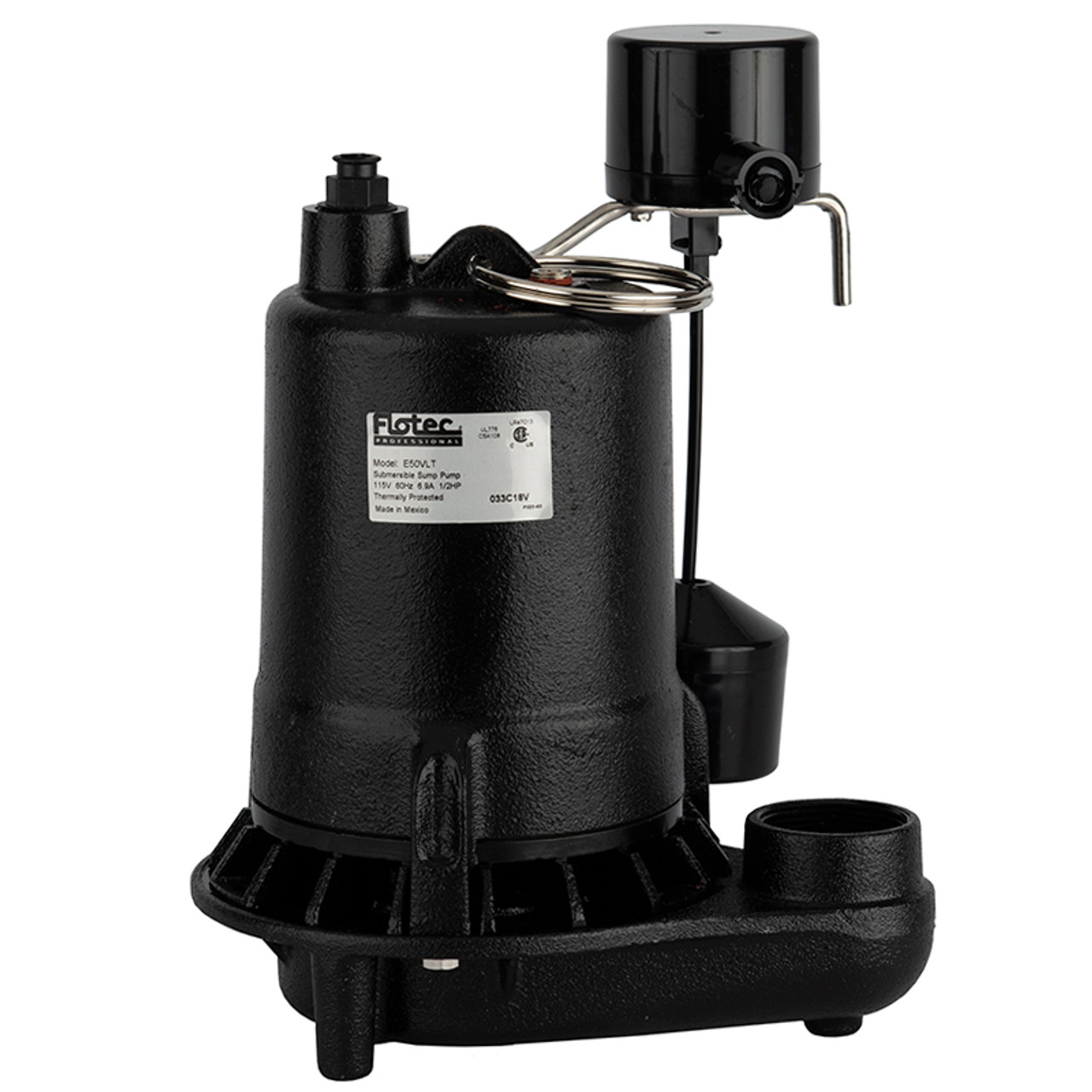How Long Do Sump Pumps Last?
Sump pumps are essential for diverting water that enters your basement or crawlspace away from your home to avoid flooding, water damage, and other issues. You must replace this sump pump every few years to ensure the security of your home. The nine essential indications that it’s time for a new sump pump are covered in this article if you’re unsure of when yours was installed or if it’s necessary.
On average, a sump pump can last about 10 years. However, how much work is required will determine this. Your sump pump might require replacement more frequently if you reside in an area that is particularly humid, your house is situated in a valley or depression where water and moisture tend to collect, or it was installed incorrectly.
Your sump pump will need to be replaced more frequently the more it is used. It’s better to time your replacement based on specific signs of a problem because of this variability. We’ll discuss some of the typical indicators that it’s time to replace your sump pump in the section that follows.
Table of Contents
How Many Times Does The Sump Pump Turn On/off
If your sump pump is “rapid cycling”, i.e. turning on and off again quickly, your sump pump could see a much shorter lifespan than 10-15 years—especially if this problem isn’t resolved.
Starting up puts a lot more stress on most motors than regular operation does. A motor will therefore wear out much more quickly than it should if it is constantly starting, stopping, and restarting.
Issues that can cause a sump pump to “rapid cycle” include:
- Incorrect float switch settings
- Faulty float switch
- A faulty check valve on the discharge pipe
- Incorrect sump pump and/or basin sizing
Factors That Sump Pump Needs To Be Replaced
Sump pumps that are worn out and in need of replacement can be identified in a variety of ways. You should go check on your sump pump at least once a year, preferably a month or so before your wettest season, for maximum safety and to prevent costly water damage. When you check on it, look for the following nine signs of damage and old age:
1. Strange Noises
Your pump may be making unusual noises if one or more parts are worn out or damaged, which is usually the case. For instance, if your sump pump is making rattling or grinding noises, it’s likely that your impeller—the fan that pulls water down from your sump pump—is broken or stuck. A failed bearing is likely the cause of a loud motor. It’s probably time to get a new one, whatever the strange noise is.
2. Excessive Vibrations
If your pump vibrates a lot while it is running, it may be because the impeller’s blades have been damaged or bent from sucking up hard debris. This bending may cause the object to wobble, and the wobble causes vibration. Even though a few slight bends in the impeller might be straightenable, it would probably be better to just purchase a new sump pump.
3. Infrequent Pump Usage
A sump pump’s shelf life will decrease with infrequent use, similar to how car batteries do. Regularly testing your sump pump in between heavy rains will help to support the internal mechanisms of the appliance and give you an early warning of any issues.
Keep a journal of the times you test the pump as a favor to yourself. Call us for maintenance and testing if you’ve never thought about activating it or if you’re new to the house.
4. On/off Switch Issues
Every pump has a switch that a float arm controls. The float arm, as its name suggests, floats on the water, and when the water level reaches a certain level, the arm will flip the switch to turn on the pump.
This procedure can be halted if there is an issue with the float arm or the switch itself. Running continuously is among the most typical signs of this issue. One of these two components is likely to malfunction if the pump does not shut off.
Another common issue is irregular cycling, where the pump seems to turn off even though there is still a lot of water to pump or it turns on even though there isn’t enough water to warrant pumping yet.
Wiring issues, which typically occur after a power outage (see below), could also be the root of both of these issues. If you are having these issues, it doesn’t matter what the cause is—you need to replace the sump pump.
5. Visible Rust
The brown substance may be caused by battery terminals that are corroded, but bacteria may also be to blame for the discoloration. The blight, also known as iron bacteria because of its color, feeds on the iron in water to discolor it and, in severe cases, produce a gel-like substance that can clog plumbing systems, including your sump pump.
Although iron bacteria do not pose a threat to human health, they will interfere with water flow in your drainage system.
6. Lack Of Horsepower
If your sump pump takes a long time to pump out water, you may not have enough horsepower for the volume of water it needs to pump or the complexity of the pipe layout it needs to pump that water through. A sump pump with more horsepower is required to efficiently move water through pipes with high water volumes, numerous elbows, or vertical fixtures.
Even if your pump is relatively new, if you’re seeing abnormally long run times, it’s insufficiently powerful. Get a brand-new one that can handle the task, one that is strong enough.
7. Irregular Cycling
Even in times of heavy rain, there may be a problem if your sump pump frequently cycles on and off. The pump might activate even when only a few inches of water accumulate in the basin due to something as simple as an incorrectly adjusted float switch.
The pump turns on and off at strange intervals may also be caused by wiring issues. The pump will intermittently start and stop if there is an electrical short, either in the home or the machine.
8. Evidence Of Rust
Your sump pump is close to failure if there are any signs of rust. Whether it’s actual rust or a red-tinted bacteria known as “iron bacteria,” the rust-like substance will gradually start clogging the pipes so that your pump has to work harder to push water through and, eventually, will no longer be able to get enough water through anymore. This calls for a new pump to be installed right away.
9. The Motor Keeps Getting Stuck
This most frequently occurs in pumps that must handle a lot of sediment or other challenging material. Your motor might be impacted if you notice that it frequently stops abruptly. You can purchase a filter now to help extend the life of your pump even if you don’t currently have this issue but are aware that your pump will eventually need to handle too much sediment.
For your sump pump to continue working properly, you will still need to clean out this filter every six to twelve months and replace it every few years.
10. It Runs for a Long Time
This symptom most likely indicates that your pump lacks enough horsepower to handle the volume of water it must handle or the distance it must pump it. Pipe diameters, plumbing elbows or pathways, and reservoir dimensions must all be taken into account when determining the size of the pump you need.
In addition to the amount of water it will be moving, the pump’s size must also take into account the location of the drain pipes. To overcome gravity, the pump will require more force if it must force water up tall, vertical plumbing fixtures. Additionally, more force will be needed to force water through bends if the layout contains many turns and elbows. It takes a lot of horsepowers for sump pumps to move water to the opening when they have to drain water through long drain pipes.

11. The Motor Stops
When the motor stops working, one of the biggest issues and most obvious signs that you need a new sump pump arises. Make sure to confirm that it is not a problem somewhere else, though, before you dismiss it as unfixable. For instance, the pump might have blown a fuse or become unplugged. Therefore, if your motor isn’t working, check the plug and your fuse box. If neither of those was the problem, you require a new sump pump.
12. Constantly Running
The arm and switch mechanism of a sump pump must function correctly for it to be effective. The switch is controlled by the float inside.
It could easily wear out the engine and be quite annoying if it runs all the time. The inability to control the amount of water it receives may also be indicated by a pump that runs continuously. See if you can replace it.
13. Recent Power Outage
Your pump’s electrical system may become harmed by power outages in your home. Even if you have backup power set up, your sump pump will still be damaged. Run a quick test on your sump pump to see if it was harmed during a recent power outage if you have.
Heavy rains are expected as spring approaches. This is the perfect time to inspect your sump pump and keep an eye out for the warning signs you read about above. Look in your basement for indications that a new sump pump is necessary.
